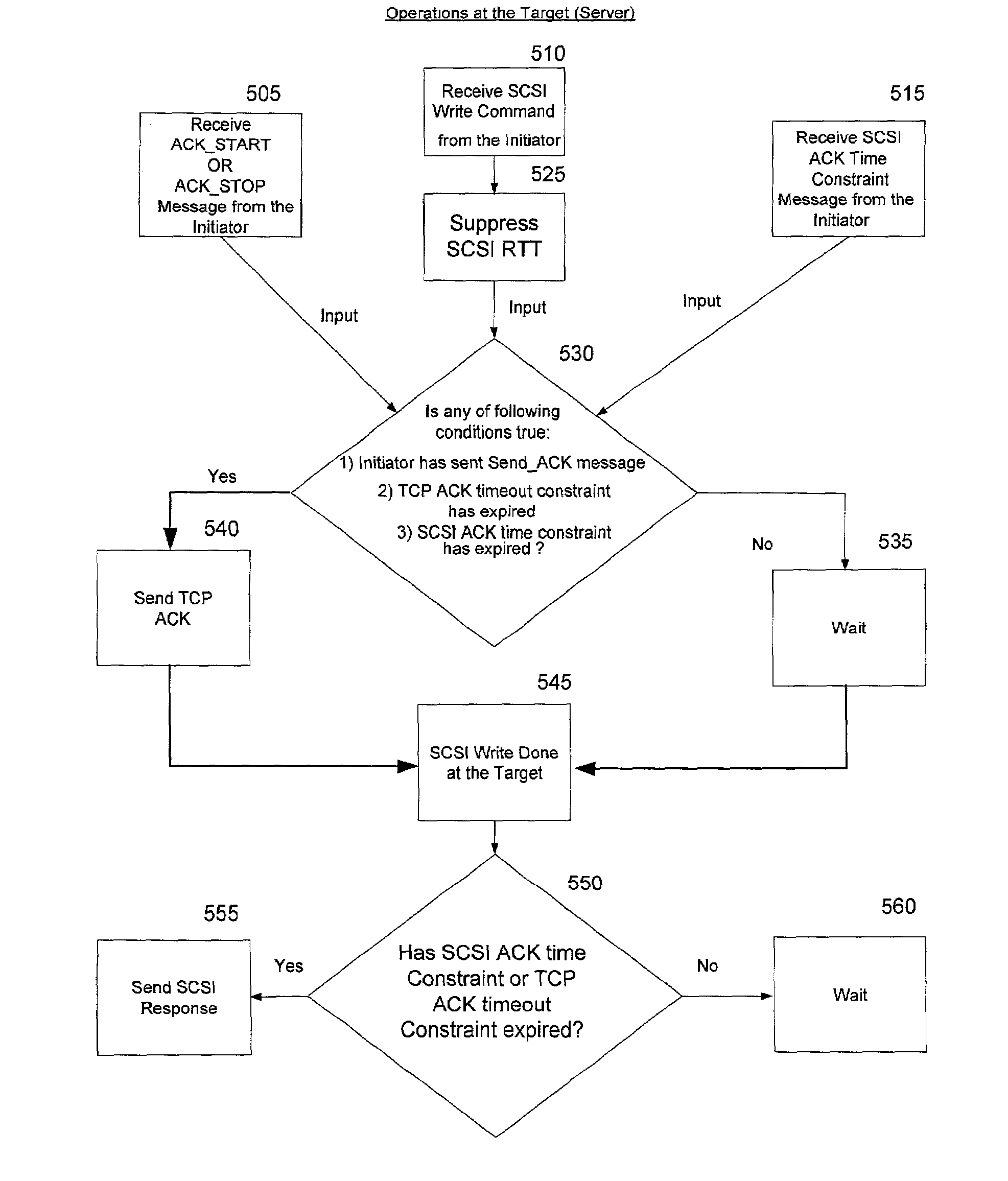System and method for improving backup performance of media and dynamic ready to transfer control mechanism
a technology of dynamic ready transfer and backup performance, applied in the field of system and method for improving backup performance of media and dynamic ready transfer control mechanism, can solve the problem that i/o operations are typically much slower than processing speed, and achieve the effects of reducing the number of explicit scsi ack messages, containing network hardware and maintenance costs, and reducing cpu utilization
- Summary
- Abstract
- Description
- Claims
- Application Information
AI Technical Summary
Benefits of technology
Problems solved by technology
Method used
Image
Examples
Embodiment Construction
[0028]A networked storage system 10 of the present invention is illustrated in FIG. 1. The system 10 generally includes a plurality of client systems 100A–100Z, a network 102, and a target backup system 104. The client systems 100A–100Z are communicatively connected to target system 104 via the network 102. The client systems 100A–100Z have their own private data storage on private disk drives. These private data storage are backed up to the target system 104 by streaming the data over the network 102. The data that is backed up at the target system 104 can be restored on demand to each of the client systems 100A–100Z over the network 102. Many types of data may be stored at the target system 104, such as database files, media files, personal folders, and executable files. The system 10 includes a plurality of executable instruction codes stored on a computer-readable medium.
[0029]FIG. 2 illustrates the concept of asymmetric data traffic in which the data flows primarily in one dire...
PUM
 Login to View More
Login to View More Abstract
Description
Claims
Application Information
 Login to View More
Login to View More - R&D
- Intellectual Property
- Life Sciences
- Materials
- Tech Scout
- Unparalleled Data Quality
- Higher Quality Content
- 60% Fewer Hallucinations
Browse by: Latest US Patents, China's latest patents, Technical Efficacy Thesaurus, Application Domain, Technology Topic, Popular Technical Reports.
© 2025 PatSnap. All rights reserved.Legal|Privacy policy|Modern Slavery Act Transparency Statement|Sitemap|About US| Contact US: help@patsnap.com



